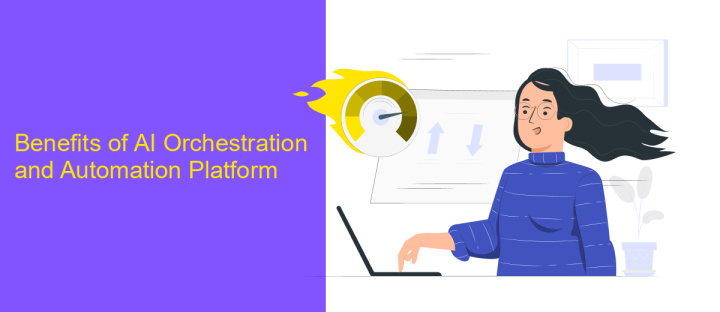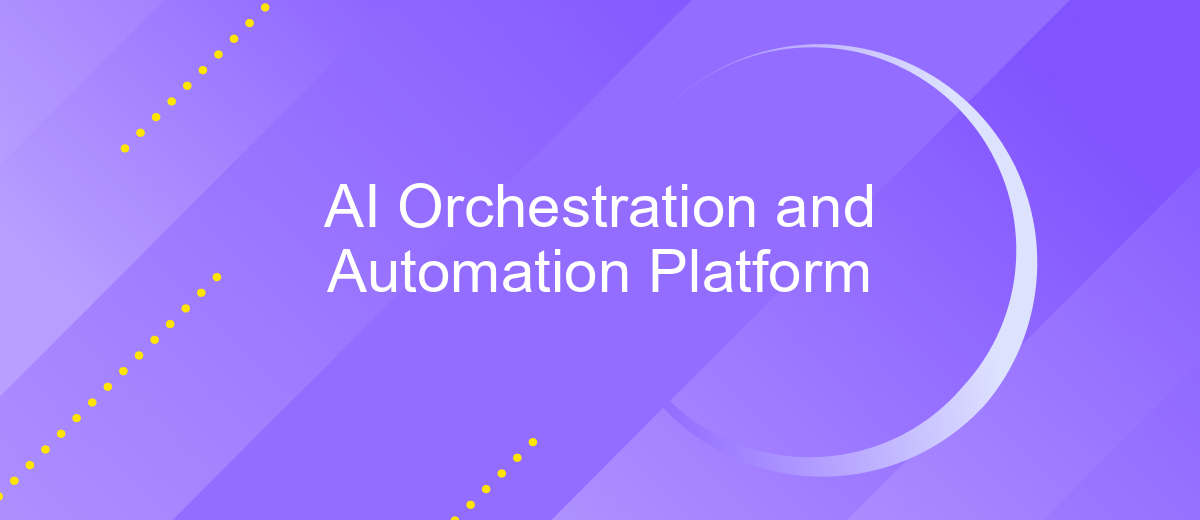AI Orchestration and Automation Platform
In today's rapidly evolving technological landscape, businesses are increasingly turning to AI orchestration and automation platforms to streamline operations and enhance efficiency. These platforms integrate various AI tools and processes, enabling seamless coordination and management of complex tasks. By automating repetitive activities and optimizing resource allocation, organizations can focus on innovation and strategic growth, ultimately driving competitive advantage in an ever-changing market.
What is AI Orchestration and Automation Platform?
An AI Orchestration and Automation Platform is a sophisticated system designed to streamline and enhance the deployment and management of artificial intelligence solutions. These platforms integrate various AI tools and technologies to automate complex processes, improving efficiency and consistency across diverse applications. By orchestrating AI workflows, they enable organizations to leverage AI capabilities more effectively, reducing manual intervention and minimizing errors.
- Seamless integration: Connects disparate AI tools and systems for cohesive operation.
- Automated workflows: Simplifies complex tasks by automating routine processes.
- Scalability: Easily adapts to growing data and operational demands.
- Enhanced monitoring: Provides real-time insights and analytics for informed decision-making.
- Cost efficiency: Reduces operational costs by optimizing resource allocation.
By utilizing an AI Orchestration and Automation Platform, businesses can focus on strategic growth while the platform handles repetitive tasks, data processing, and system management. This not only accelerates innovation but also ensures that AI-driven initiatives are executed with precision and agility. As a result, organizations can achieve their objectives faster, maintaining a competitive edge in the rapidly evolving technological landscape.
Benefits of AI Orchestration and Automation Platform

Implementing an AI orchestration and automation platform offers numerous advantages for businesses looking to streamline operations and enhance efficiency. By automating repetitive tasks, organizations can significantly reduce human error and free up valuable resources, allowing employees to focus on more strategic activities. This not only boosts productivity but also fosters innovation, as teams can dedicate more time to developing creative solutions and driving business growth. Furthermore, AI orchestration ensures seamless integration between various systems and applications, providing a unified approach to managing complex workflows.
Platforms like ApiX-Drive facilitate effortless integration and automation by connecting disparate applications without the need for extensive coding knowledge. This enables businesses to swiftly adapt to changing market demands and optimize their processes in real-time. Additionally, AI-driven insights offer predictive analytics that help organizations make informed decisions, improving overall agility and responsiveness. As a result, companies can enhance customer experiences, reduce operational costs, and maintain a competitive edge in their respective industries. Ultimately, adopting an AI orchestration and automation platform empowers businesses to achieve greater scalability and resilience in an ever-evolving digital landscape.
How to Use AI Orchestration and Automation Platform

Integrating an AI Orchestration and Automation Platform into your workflow can significantly enhance efficiency and productivity. To begin, familiarize yourself with the platform's interface and capabilities. Understand how it connects with your existing systems and tools to streamline processes. This foundational knowledge is crucial for effective implementation and use.
- Identify the processes that can benefit from automation and orchestration.
- Configure the platform to integrate with your current IT infrastructure.
- Set up workflows and automation rules tailored to your specific needs.
- Monitor the platform's performance and adjust configurations as necessary.
- Continuously train your team to leverage the platform's full potential.
Once the platform is up and running, regularly review its impact on your operations. Look for areas where further automation could be applied and ensure your team is comfortable with any changes. By doing so, you can maximize the benefits of AI orchestration and automation, leading to a more agile and responsive business environment.
Challenges of AI Orchestration and Automation Platform

Implementing an AI orchestration and automation platform presents significant challenges. One primary issue is the integration of diverse AI models and tools, each with its own unique requirements and configurations. This complexity can lead to compatibility issues and hinder seamless operation.
Another challenge is ensuring data security and privacy. As these platforms handle vast amounts of sensitive data, any vulnerability could lead to breaches, compromising user trust and legal compliance. Furthermore, the dynamic nature of AI technologies demands constant updates and maintenance, which can strain resources.
- Complex integration of diverse AI models and tools
- Ensuring robust data security and privacy
- Continuous updates and maintenance requirements
- Scalability to handle increasing data volumes and complexity
Moreover, achieving scalability is crucial as the volume and complexity of data continue to grow. AI orchestration platforms must efficiently manage expanding datasets and more sophisticated AI processes. Addressing these challenges requires a strategic approach, prioritizing interoperability, security, and adaptability to future technological advancements.
Future of AI Orchestration and Automation Platform
The future of AI orchestration and automation platforms is poised for transformative advancements, driven by the increasing demand for seamless integration and intelligent automation across industries. As businesses strive to enhance operational efficiency, these platforms will evolve to offer more sophisticated capabilities, including real-time data processing, predictive analytics, and adaptive decision-making. The integration of AI with Internet of Things (IoT) devices and cloud-based services will further amplify their potential, enabling organizations to automate complex workflows and optimize resource allocation with unprecedented precision.
Moreover, platforms like ApiX-Drive will play a crucial role in this evolution by simplifying the integration process. By providing user-friendly interfaces and robust API management, they empower businesses to connect disparate systems effortlessly, ensuring a smooth data flow and enhanced collaboration. As AI orchestration and automation platforms continue to advance, we can anticipate a future where businesses can harness the full potential of AI to drive innovation, streamline operations, and create more personalized customer experiences, ultimately leading to a more agile and competitive business landscape.
FAQ
What is an AI Orchestration and Automation Platform?
How can an AI Orchestration and Automation Platform benefit my business?
What are the key features to look for in an AI Orchestration and Automation Platform?
How do I integrate existing systems with an AI Orchestration and Automation Platform?
What are some challenges in implementing an AI Orchestration and Automation Platform?
Time is the most valuable resource in today's business realities. By eliminating the routine from work processes, you will get more opportunities to implement the most daring plans and ideas. Choose – you can continue to waste time, money and nerves on inefficient solutions, or you can use ApiX-Drive, automating work processes and achieving results with minimal investment of money, effort and human resources.

